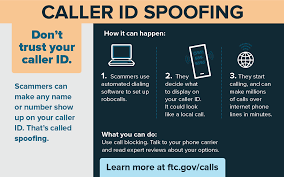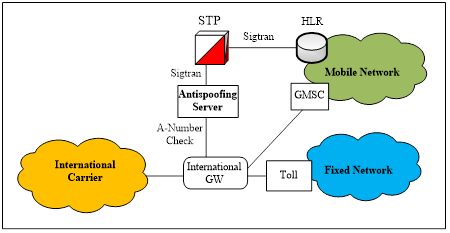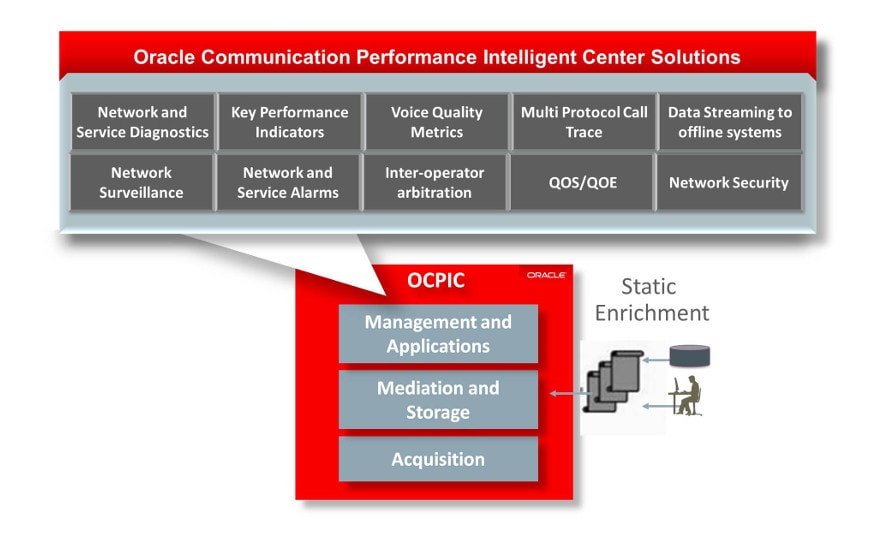Not Registered? Click here to sign up
-
Contact: +844-3766-3766
Signaling Solutions
Signaling sytem is always the brain of communication networks. Since 2006, ISTT has been a strategic partner of Tekelec – a world leading STP provider (accquired by Oracle in 2012), we have provided SS7 solutions for 2G/3G networks in Vietnam and other SEA markets for nearly 10 years. With the evolution of telco network from 3G to 4G, Oralce-Tekelec anounced a new signaling product – Diameter Signaling Router which is playing a big role in telco networks worldwide. Being a gold partner of Oracle, with valuable experience in signaling solutions, ISTT is proud to be a trusted technology partner of big operators in Vietnam.

Setting the standards in reliability, Oracle Communications EAGLE has earned the reputation of being the most trusted platform in the industry, providing a solid foundation to deliver innovative signaling solutions to carrier networks worldwide.
Core Signaling At Its Best
- Concentrate and simplify connectivity
- Congestion and traffic management
- Cost-effective and flexible network deployment
- Interworking and interoperability
- Monitoring and analytics
- Modular architecture supports 5+ nines availability
- Enable value-added services
SS7 STP and signaling gateway
- Earned reputation of being the most reliable STP in the industry
- Sophisticated, origin-based SS7 routing policies
- Congestion management
- Flexible and scalable network engineering
- Centralized origin based translation services
- Eases network administrative activities associated with adding new STPs within an SS7 network
- Removes administrative burden of changing routing rules within adjacent switches
- Collapse multiple STPs into a single pair maintaining routing rules within connecting SS7 networks
Number portability solutions for fixed and mobile operators
- High-performance, memory-based database modules
- Scalable transaction using replicated modules
- Supports all industry implementations, including LNP and MNP
- Wide variety of protocols available for both fixed and mobile network access
- Move subscribers to 4G while maintaining their directory number, supporting SS7, SIP, and ENUM interfaces
SS7 network security
- SS7 security firewall
- Protection at all protocol layers
- Highly restrictive policies
- Policies based upon administered rules and actions
- Complete control over policy creation as new threats are discovered
Equipment Identity Register (EIR)
- Reduce mobile handset thefts
- Integrated EIR database
- Supports SS7 and Diameter interfaces and provides added flexibility for serving 3G and 4G wireless customers
Network monitoring with Oracle Communications Performance Intelligence Center
- Ensure profitability by providing business intelligence based on network traffic
- Oracle Communications EAGLE STP integration eases administrative requirements sharing naming information
- Key component in identifying SS7 network security threats

Secure and Elastic LTE/IMS Networks
Centralize Diameter routing and create a secure signaling architecture that reduces complexity and cost, and enables elastic growth, interoperability, visibility, and rapid introduction of new offerings.
Broad Signaling Control
- Improves signaling network scalability with a centralized routing architecture
- Reduces provisioning, maintenance, and interoperability costs
- Secures signaling interconnection and protects against outages
- Enables NFV, VoLTE, and VoWIFI with a cloud-ready solution
Multi Use Case
- HSS/PCRF/OCS address resolution routing, congestion control, and mediation
- Roaming and interworking with other technologies like SS7 and RADIUS
- Policy and charging stateful routing for VoLTE
- Integrated traffic analysis and troubleshooting tool for network visibility

Delivers business and network intelligence, empowering communication service providers to maintain an optimal subscriber experience.
Optimal Customer Experience
- Better business decisions in a fraction of the time
- Convert network traffic into useful business intelligence: network performance, service assurance, subscriber profiling, marketing campaigns, network security
- Ideal for CSPs managing network transition
SS7 Network Security
- Feel confident knowing your subscribers and network resources are secure
- Organize and search massive amounts of signaling data in near real time
- Quickly identify fraudulent activity or attempts at network abuse
- Stay ahead of attackers with the ability to customize and implement new detection rules
NGN Solutions
Sonus products work together to provide intelligent, secure, reliable and scalable Internet Protocol (IP)-based interconnect. The core data and voice networks within most global telecommunications service providers are now predominantly IP-based. Wherever possible, service providers are adopting IP due to cost advantages, the extended service reach it provides and its proven resiliency. While IP-based communications offer many significant benefits at the interconnection point between peering partners, the use of IP comes with its own set of challenges.

At the core of the challenge is the fact that IP peering connects disparate IP networks. Service providers must overcome interoperability, security and routing challenges when connecting independent networks and still be able to reliably scale their services. Sonus’ peering solution provides industry leading security such as network topology hiding, Distributed Denial of Service (DDoS) protection, and per session encryption as well as providing reliable connectivity between Time-Division Multiplexing (TDM), Session Initiation Protocol (SIP)-based and IP Multimedia Subsystem (IMS)/Long-Term Evolution (LTE) networks. Intelligent routing policies allow Least Cost Routing (LCR), routing based on connection quality as well as routing based on over 200 parameters such as origination number/gateway, partition, holidays and codec type.
Any peering solution must be able to enable tracking and billing for any minutes traversing the network. The Sonus solution provides reliable, scalable Call Detailed Record (CDR) generation and can easily integrate into multiple billing systems.
Expect More from the Sonus Interconnect Solution:
- Complete network protection from theft of service and attack, including Denial of Service (DoS) and Distributed Denial of Service (DDoS)
- Feature-rich interworking across voice, video and collaboration without compromising performance or scale
- Intelligent Routing – built-in LCR, Local Number Portability (LNP) and multimedia routing
- Can be deployed on purpose-built appliances or in private/public Clouds as a virtual solution
Benefits:
The Sonus Interconnect solution is designed to sit at the border between carriers and provide an intelligent interconnection between partner networks. Critical to any peering environment, the solution delivers the following functions:
- Secures the network border
- Enforces Quality of Service (QoS) policies with intelligent routing – provides easy migration to an LCR and quality-based routing solution
- Transcoding media and providing codec interworking, Dual-tone Multi-frequency (DTMF) and fax interworking
- Traversing intermediate Network Address Translation (NAT) and firewalls
- Ensuring Call Detail Record (CDR) generation and storage
- Flexible deployment models in either a hardware-based appliance or virtualized environment
Advantages of the Sonus Solution:
- Interworking across Web, IP and legacy protocols–– WebRTC, IP (H.323, SIP, SIP-I, SIP-T), and TDM
- Easily integrates into existing business support systems (BSS)/operations support systems (OSS) to enable migration from existing TDM assets to IP
- Delivers scalable security – encryption and DoS protection that can scale as your interconnection points grow
- Integrated LCR, LNP options to lower costs and increase voice and video quality
 IPX is a technical and business model standard defined by the GSM Association (GSMA) that mobile service providers use to transmit Long-Term Evolution (LTE) Data, Voice over LTE (VoLTE), LTE signaling, roaming and other services outside of their own networks.
IPX is a technical and business model standard defined by the GSM Association (GSMA) that mobile service providers use to transmit Long-Term Evolution (LTE) Data, Voice over LTE (VoLTE), LTE signaling, roaming and other services outside of their own networks.
Wholesale service providers and GPRX Roaming Exchange (GRX) operators are looking for new multimedia interconnect services to improve monetization. When making the move to implement new services they must overcome complex interoperability, security and service quality challenges when interconnecting disparate fixed and mobile Internet Protocol (IP) networks.
For IPX network providers, Sonus delivers a solution with the security, policy control, and signaling and media interworking needed to ensure IPX network providers success in the following:
- Revenue growth in new markets by offering new IP exchange services
- Reliable security for every network peering point
- Support for service types including Video, HD Voice over IP (VoIP), Multimedia and Rich Communications Suite (RCS)
- Flexibility in deployment either on dedicated hardware or in a virtual environment for additional CAPEX and OPEX savings
The Sonus IPX solution is comprised of:
Session Border Controllers (SBC)
- Security (IP Topology hiding, DDOS prevention, TLS/IPSec)
- Signaling interworking and media transcoding
- 10G interface connectivity
- IP Multimedia Subsystem (IMS) edge and interconnect functions – P/E/I-CSCF, I-BCF
Policy Management and Routing (PSX)
- Centralized routing
- Number portability
- Session routing proxy – IMS Border Gateway Control Function (BGCF)
Diameter Signaling Controller (DSC)
- Diameter Routing Agent (DRA) and load balancing
- Diameter Edge Agent (Topology Hiding, TLS/IPSec)
- Subscription Location Function (SLF)
- Message counting for accounting / billing
- Interworking with other IPX, 4G/LTE as well as 2G/3G networks
Seamless mobile voice and messaging over Wi-Fi
Voic e over Wi-Fi (VoWiFi) is the industry standard approach for mobile service providers seeking to deliver voice and SMS/MMS services over Wi-Fi. With VoWiFi, mobile subscribers receive a seamless voice and messaging experience as they move between the macro-cellular network and existing Wi-Fi networks, such as those at the office and home.
e over Wi-Fi (VoWiFi) is the industry standard approach for mobile service providers seeking to deliver voice and SMS/MMS services over Wi-Fi. With VoWiFi, mobile subscribers receive a seamless voice and messaging experience as they move between the macro-cellular network and existing Wi-Fi networks, such as those at the office and home.
With VoWiFi, subscribers can now receive high-performance mobile services in the exact locations they spend most of their time. It also provides a low cost international roaming solution as users can make and receive mobile calls as if they were on their home network when connected to any Wi-Fi network around the world.
For MNOs, VoWiFi addresses indoor coverage challenges in the precise locations that are typically difficult to reach with the macro network. As a result, they can see lower churn due to improved service coverage, as well as lower costs due to increased network offload.
For MVNOs and other alternative mobile service providers, VoWiFi enables adoption of a Wi-Fi First strategy. With Wi-Fi First, all subscriber voice and messaging traffic, when connected to Wi-Fi, stays on net rather than using minutes and messages from their macro cellular network partner.
Monitoring Solutions
Working with service provider customers for many years, we fully understand the need of an end-to-end monitoring system in their network.

Delivers business and network intelligence, empowering communication service providers to maintain an optimal subscriber experience.
Optimal Customer Experience
- Better business decisions in a fraction of the time
- Convert network traffic into useful business intelligence: network performance, service assurance, subscriber profiling, marketing campaigns, network security
- Ideal for CSPs managing network transition
SS7 Network Security
- Feel confident knowing your subscribers and network resources are secure
- Organize and search massive amounts of signaling data in near real time
- Quickly identify fraudulent activity or attempts at network abuse
- Stay ahead of attackers with the ability to customize and implement new detection rules

Anritsu’s Multi-Dimensional Assurance Solution provides CSPs (Communications Service Providers) with unrivalled visibility of network and service performance that enables optimization of customer experience and understanding of how customers use data services as well as how they are impacted by problems. The solution provides unique visibility into the experience of ALL your customers, including the numbers impacted by any problem, in the right context, and at the right time.
Whether for a CTO who needs to see overall service performance, a product manager seeing if their new offering is succeeding, a corporate sales executive re-negotiating a multi-million contract or network planner deciding where best to invest new capacity – Multi-Dimensional Assurance has the actionable intelligence you need.
Caller ID Antispoofing Solution

Anyone can spoof their outbound Caller ID by using an online service like Spooftel and SpoofCard, which allow anyone willing to pay to spoof numbers. These services are meant to protect the caller’s number from being displayed and claim they aren’t intended for malicious purposes, but they have limited control over who uses the service. Companies can also control their Caller ID if they have their PRI or SIP connection, the technical names for multi-line enterprise telephony setups.
Solution Datasheets
- English: IA Spoofing Datasheet – English
- Vietnamese: IA Spoofing Datasheet – Vietnamese
 Anti-spoofing solution to prevent incoming international calls from spoofing the caller’s phone number (call origin) is deployed towards connecting to the international gateway as the main source of calls. fake call. Monitor, detect, and prevent/cancel fake calls:
Anti-spoofing solution to prevent incoming international calls from spoofing the caller’s phone number (call origin) is deployed towards connecting to the international gateway as the main source of calls. fake call. Monitor, detect, and prevent/cancel fake calls:
– Calls from international to the telecommunications network receiving calls with caller numbers belonging to the enterprise’s telecommunications network.
– Calls from international to telecommunications networks receiving calls.
Architecture
he system can be installed on any general purpose server such as HP, Dell, IBM… Capable of operating on virtualization platforms such as VMWare, KVM (linux).
The system has a flexible modular architecture ready to add new, add and expand modules without changing the original architecture.
Capacity
The system is capable of handling up to 40 million calls/month.
he system is designed to be able to deploy on multiple sites simultaneously.
High Avaibility
The system is designed to ensure redundancy in case of a faulty device, it does not affect the operation of the system.
The system is designed to ensure that when the entire system fails, the service will not be interrupted or ensure the minimum interruption time.




















